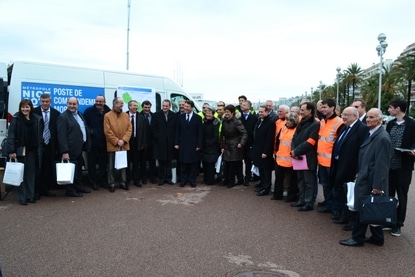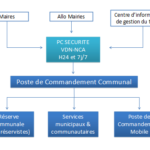Christian Estrosi and the mayors of the communes of the Nice Côte d’Azur Metropolis inaugurated the new mobile crisis management command center this Tuesday. This initiative is part of a comprehensive risk prevention plan following the recent climate events of 2011.
In terms of natural disasters, the Alpes-Maritimes are far from being safe. The overflow of the Var river in 1994, the forest fires in Cagnes-sur-Mer in 2003, or the storm surges of May 2010 and November 2011, are just a few examples that push for more reactivity in emergency responses. It is with this in mind that Christian Estrosi, the president of Nice Côte d’Azur, accompanied by the mayors of the communes of the Nice Côte d’Azur Metropolis, presented the territory’s new mobile command center this Tuesday.
Coordinating intervention teams
The goal of this initiative is to quickly coordinate the intervention teams of the communes and relay information to the Communal Command Post (CCP). “Imagine an event occurring on the road to Isola 2000 that requires the metropolis’s emergency services,” explains Christian Estrosi. “From the mobile post, the mayor could coordinate the assistance from various communes.” For this purpose, the urban risk protection service teams of the City of Nice and the civilian reserve, which manage this autonomous vehicle, have a digital radio network, cameras that can transmit live images, a computing link, 2 workstations, as well as all the necessary mapping. Deployable in less than an hour, the mobile command center can assess the situation on the ground and coordinate the first interventions.
A new risk prevention policy
Costing 41,000 euros, the mobile command center is the indispensable complement to the crisis management room, established in 2010. The initiative is part of the new risk management policy of the metropolis, which includes, among other things:
– The creation of a civilian and citizen reserve composed of volunteers since September 2010, aimed at developing prevention actions and intervening during an event to complement emergency services.
– A sensitization policy in CM1 classrooms by experts from the communal civilian and citizen reserve. For the 2011-2012 school year, 137 classes from 86 schools will be involved.
– The brush clearance management plan. This requires landowners in areas most exposed to fires to clearbrush. Controls can be conducted by city risk service agents.




